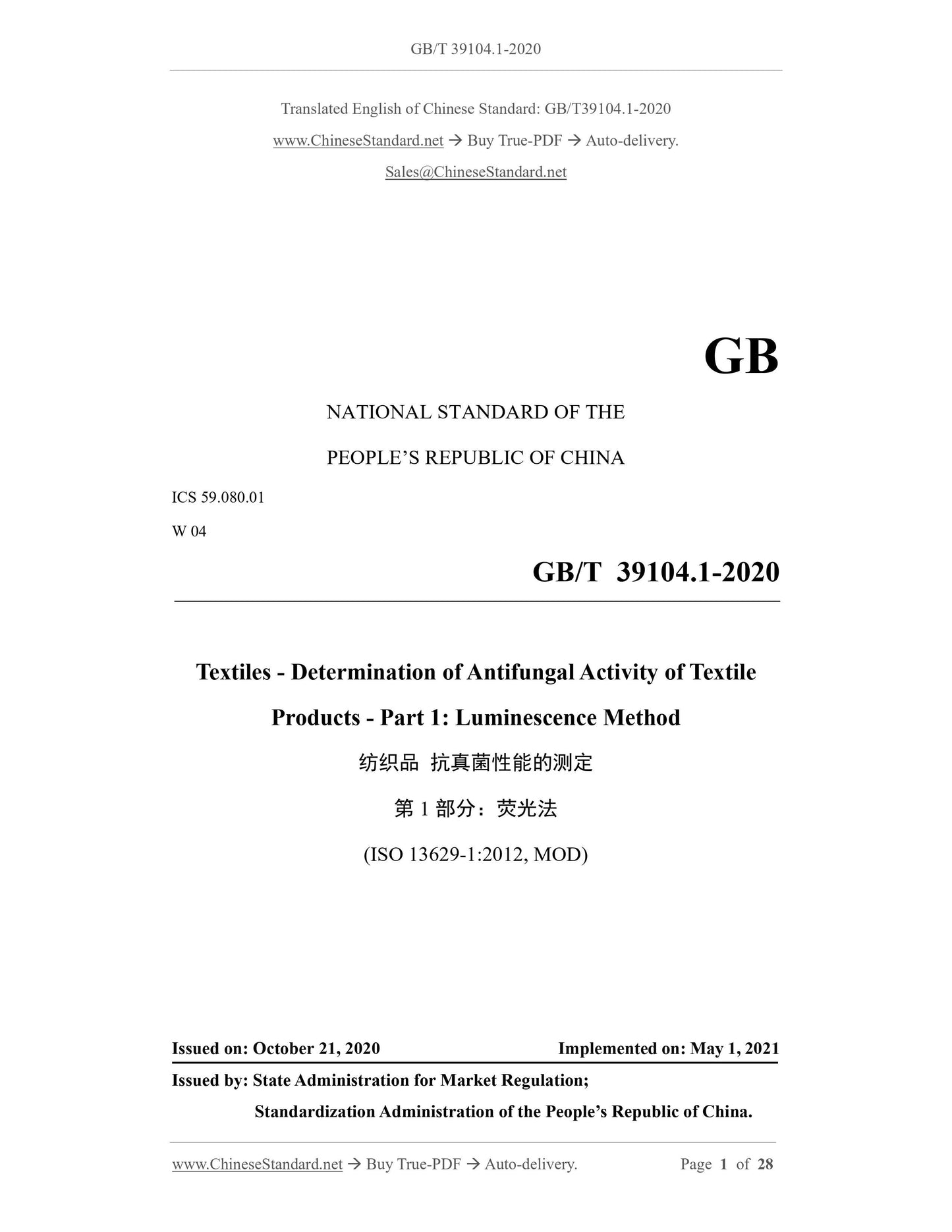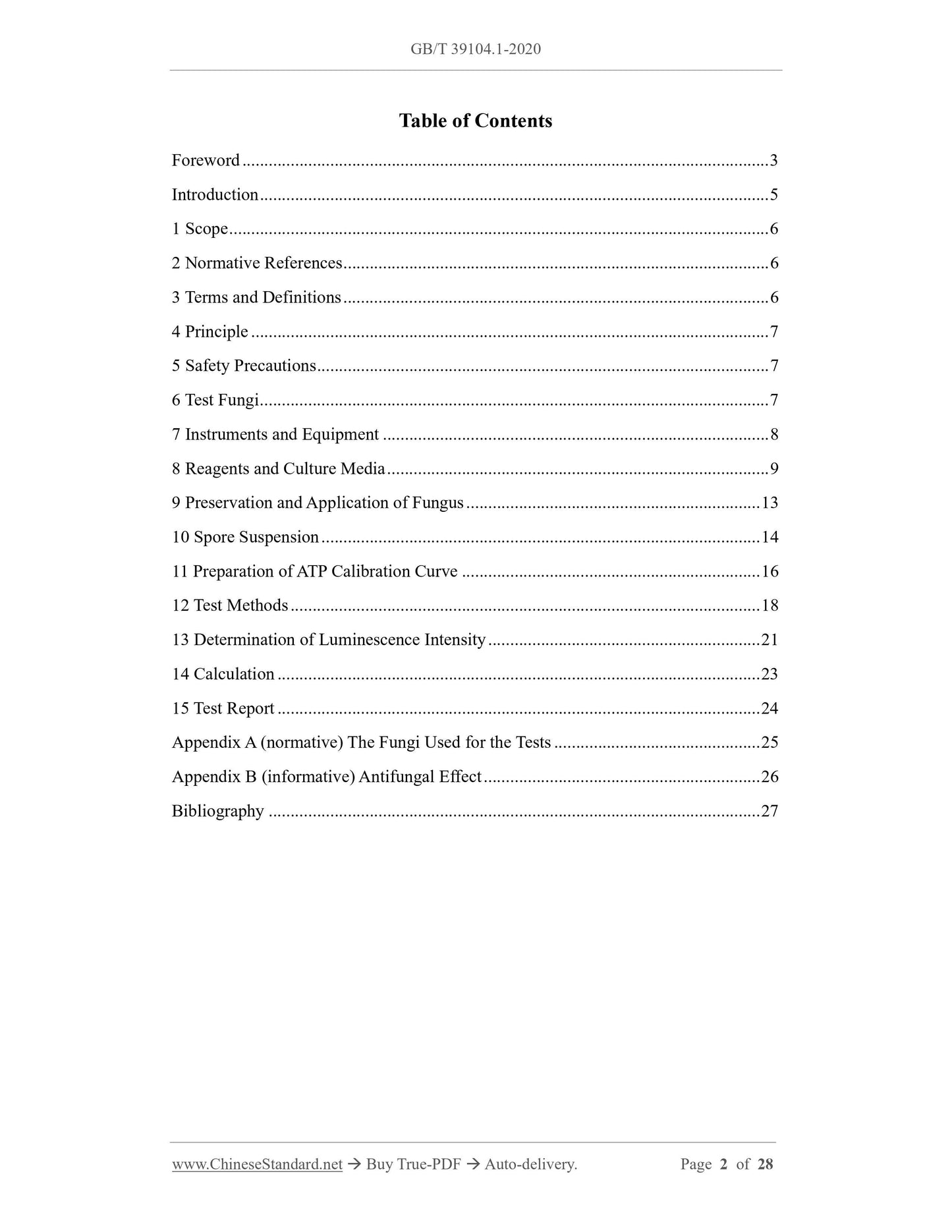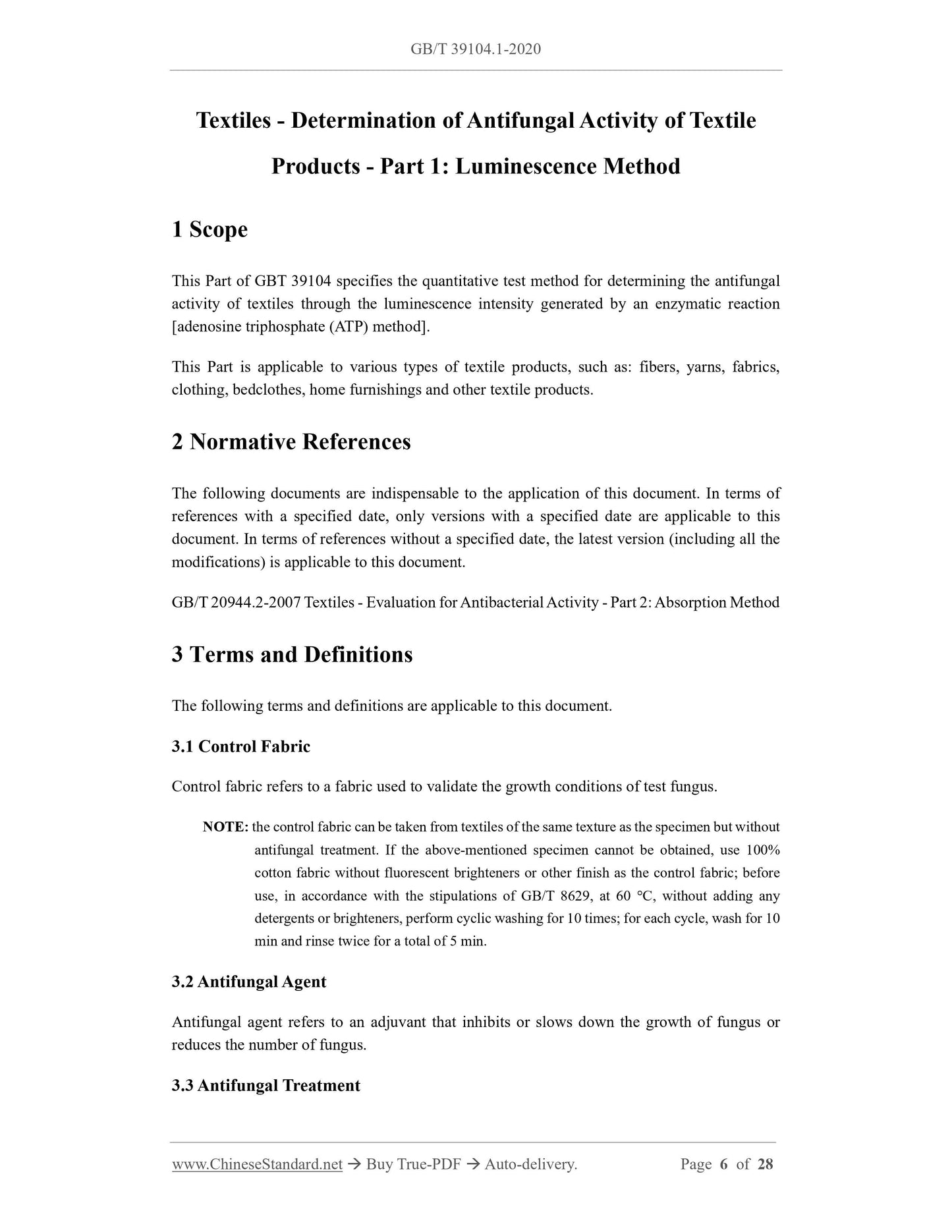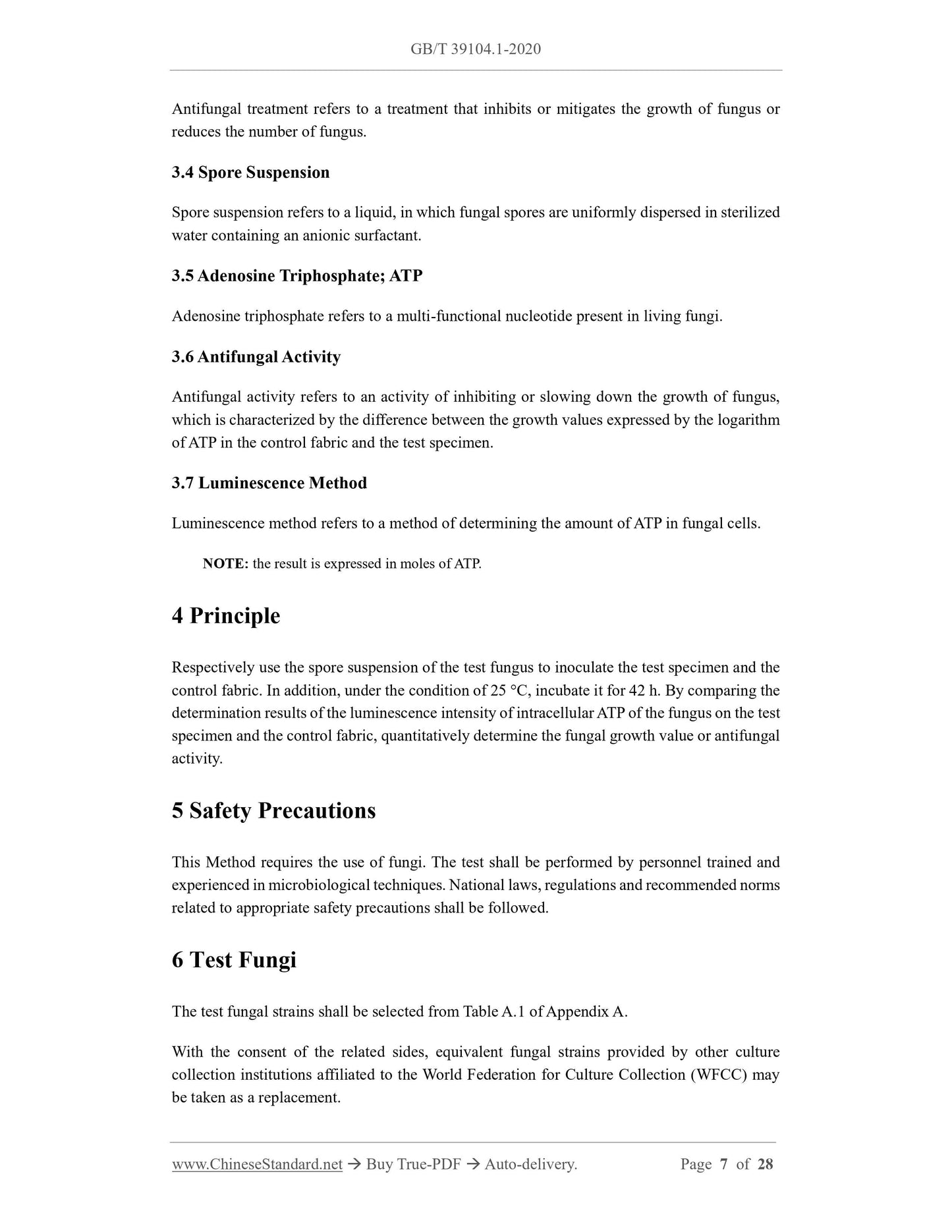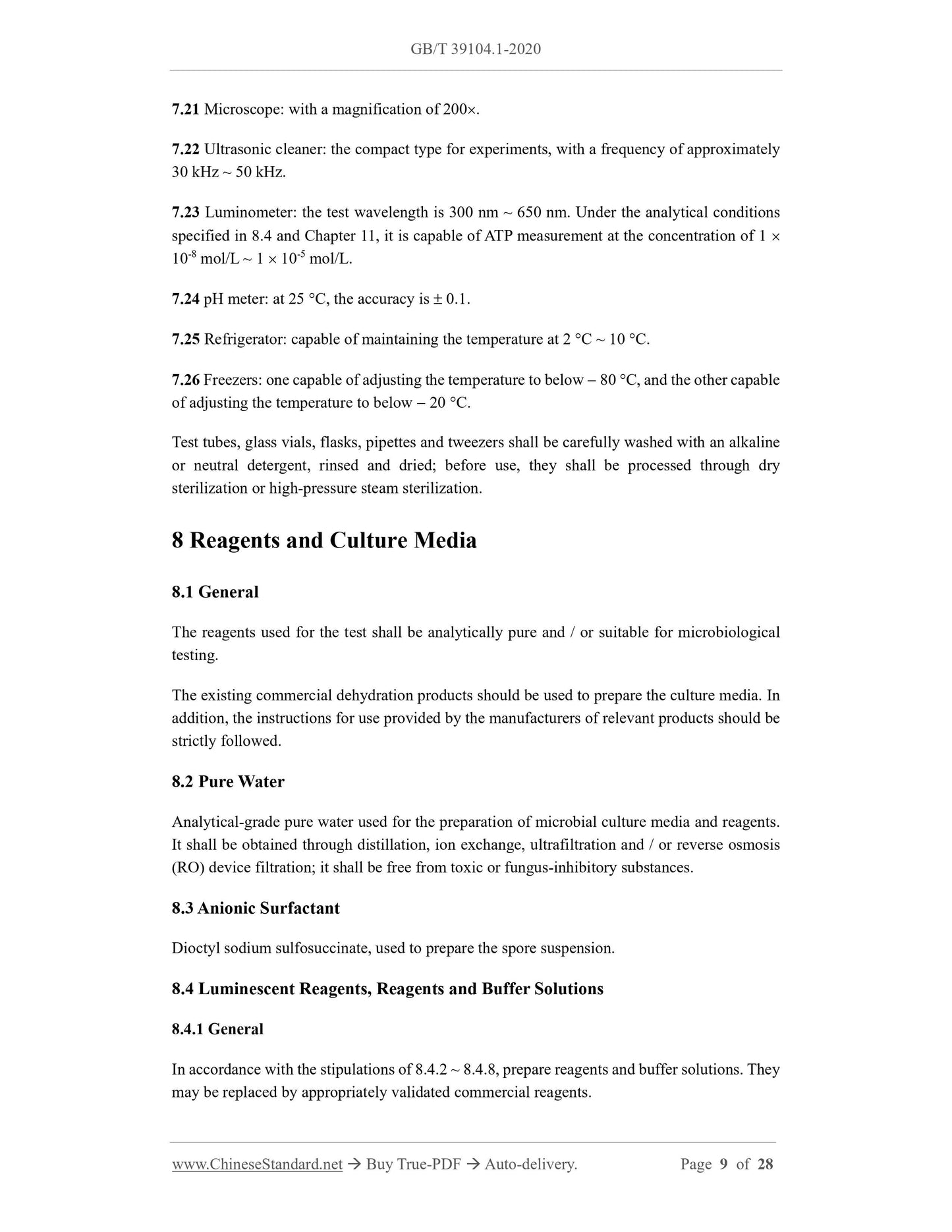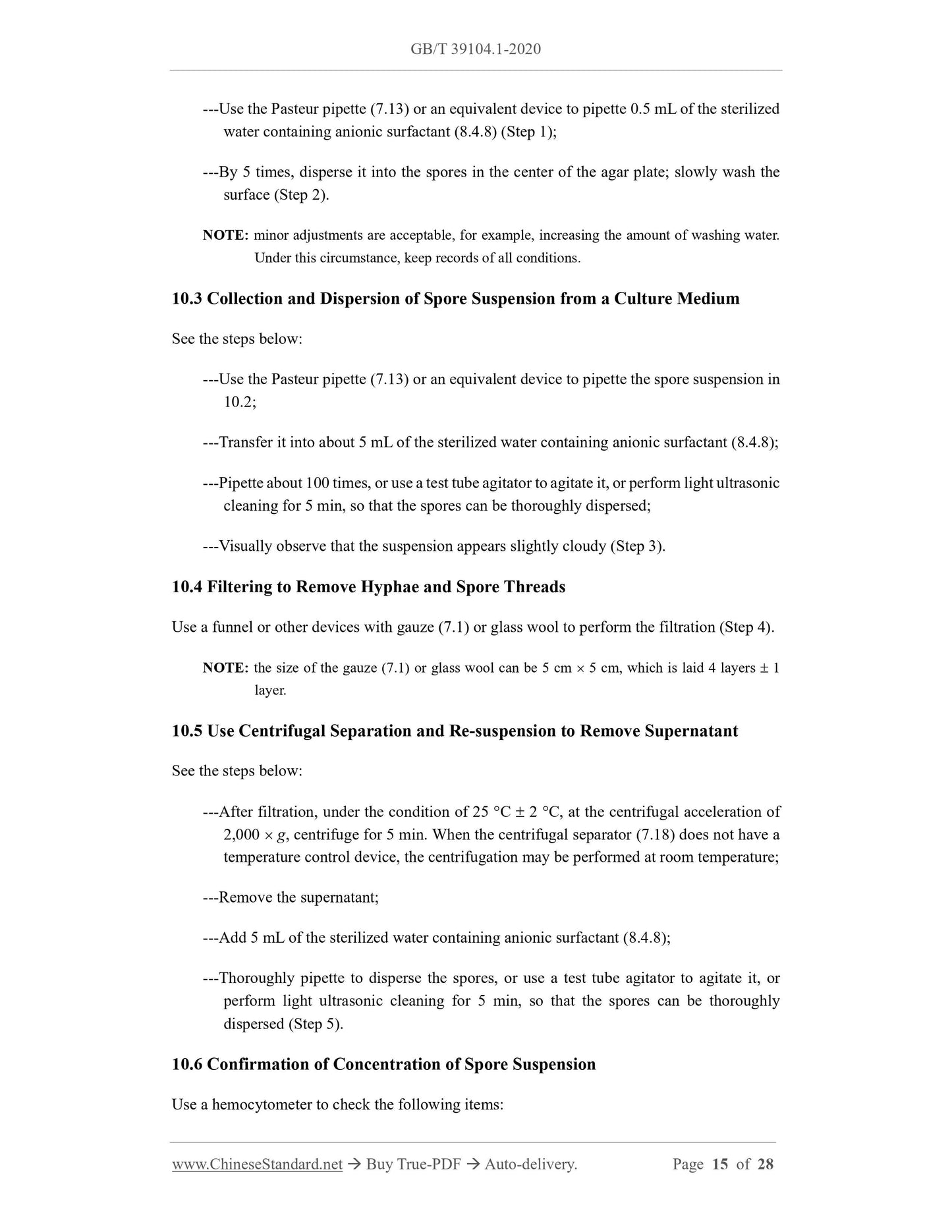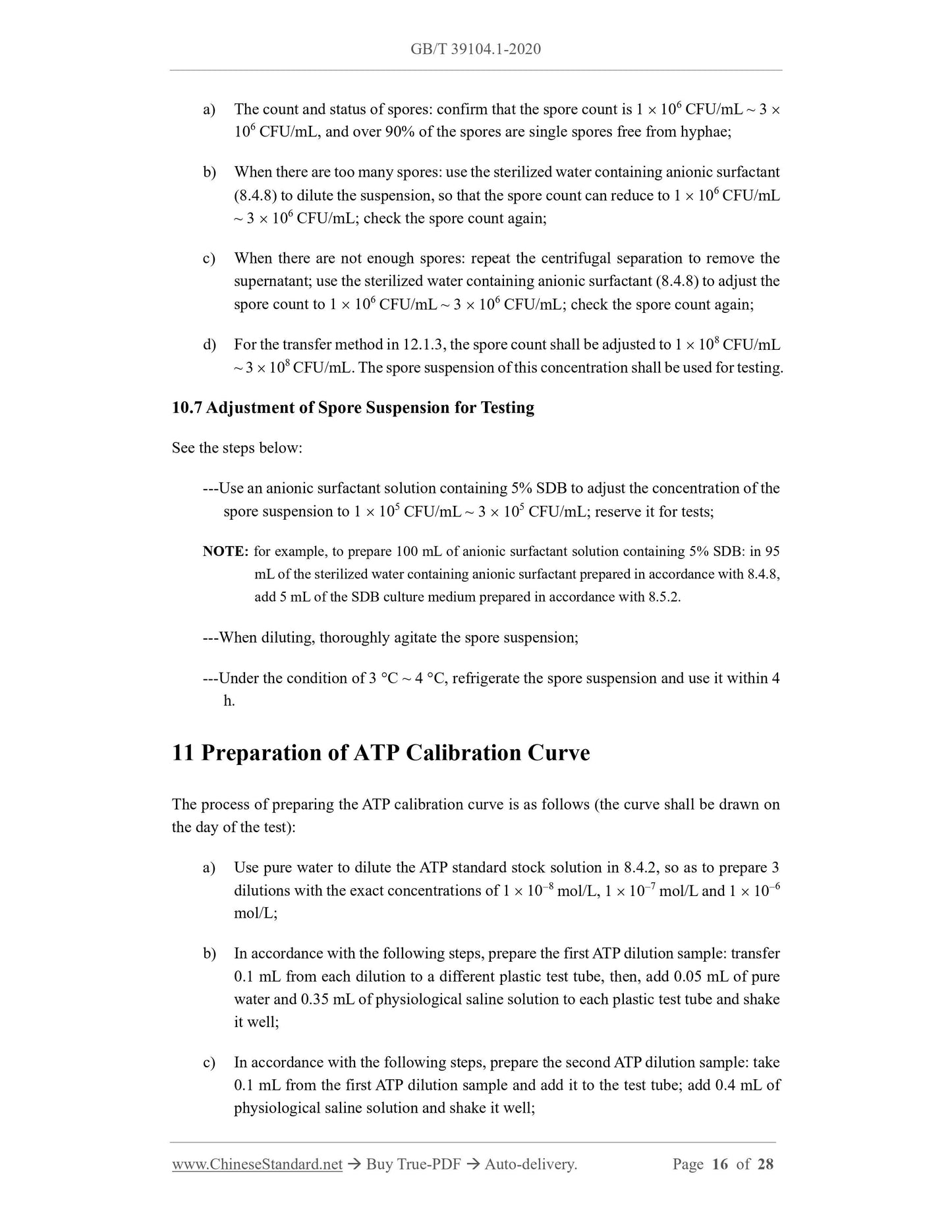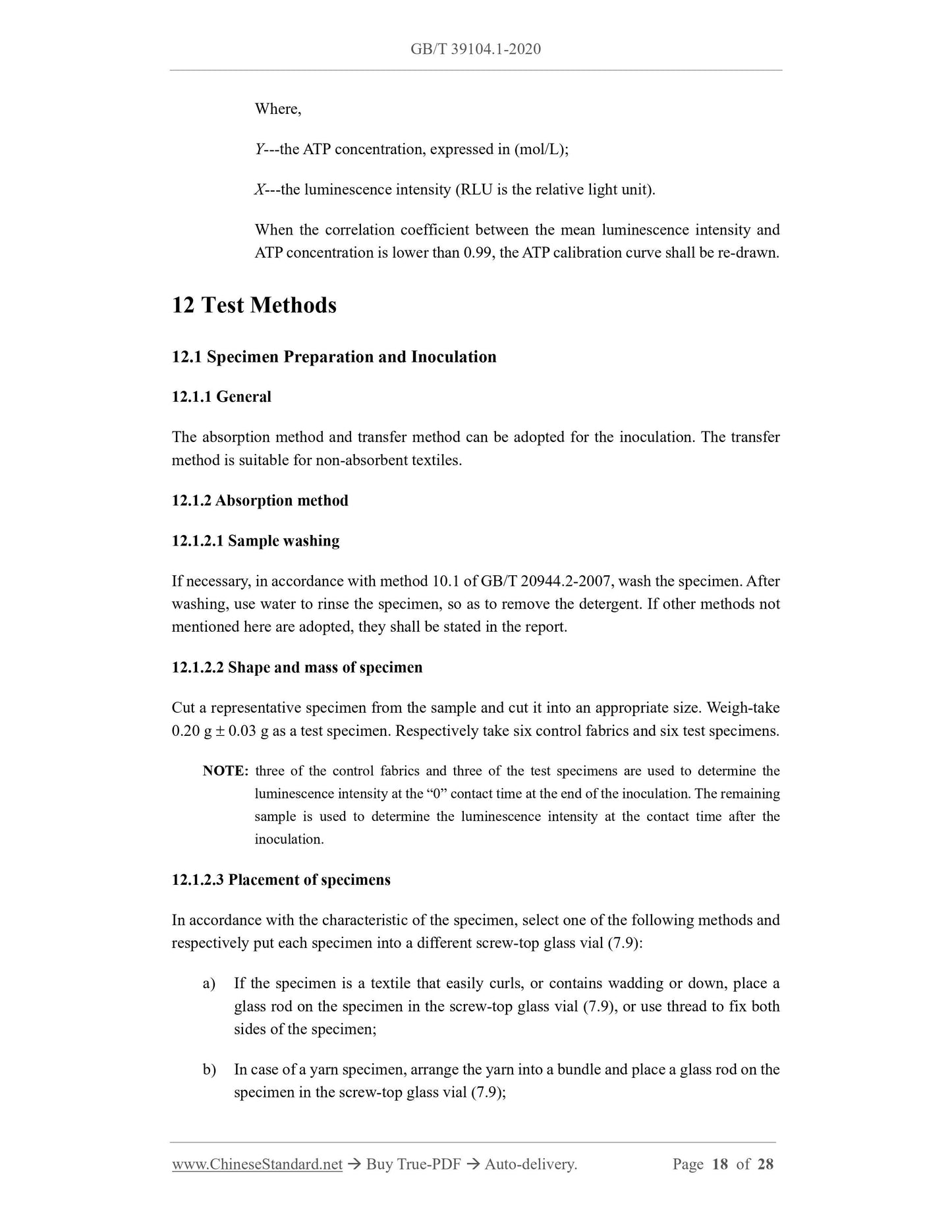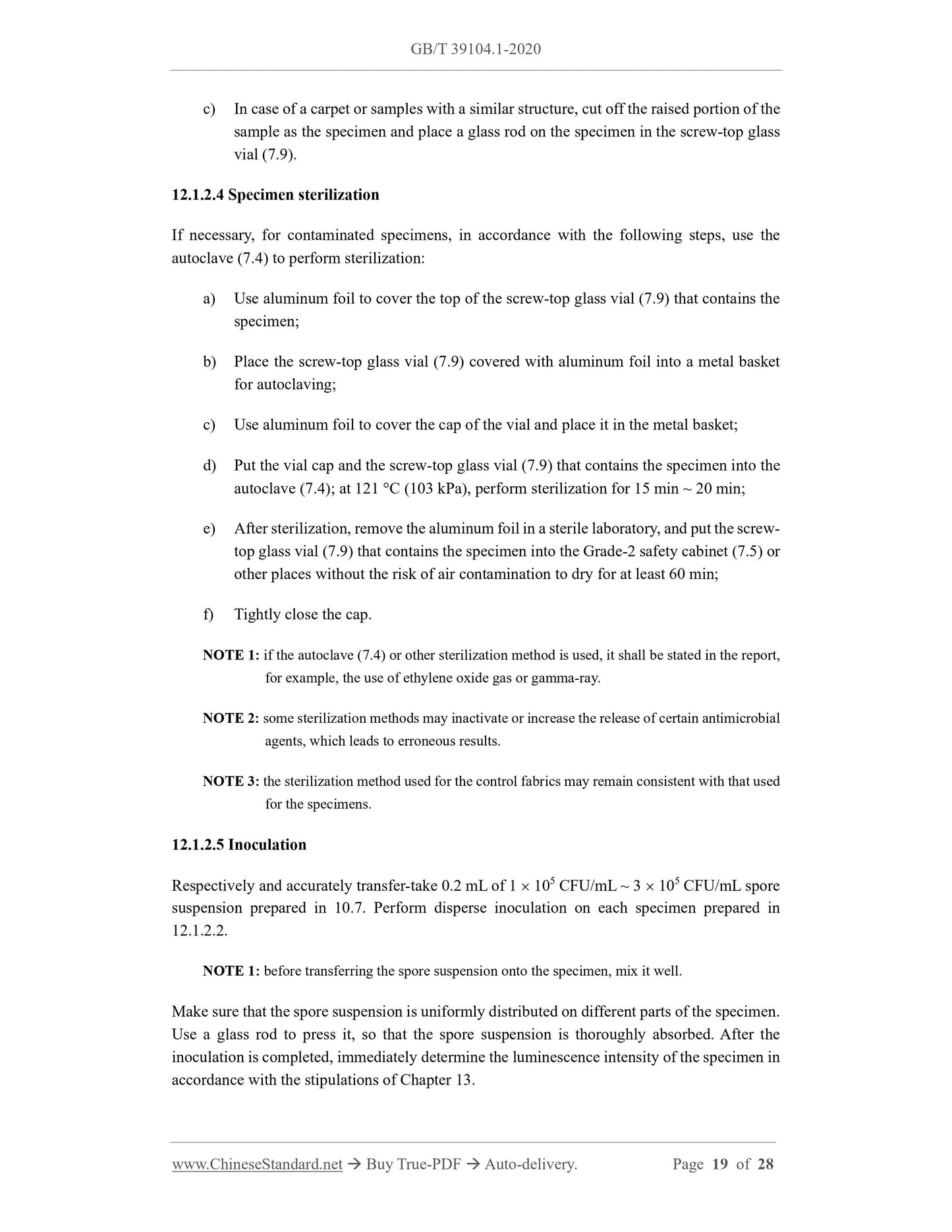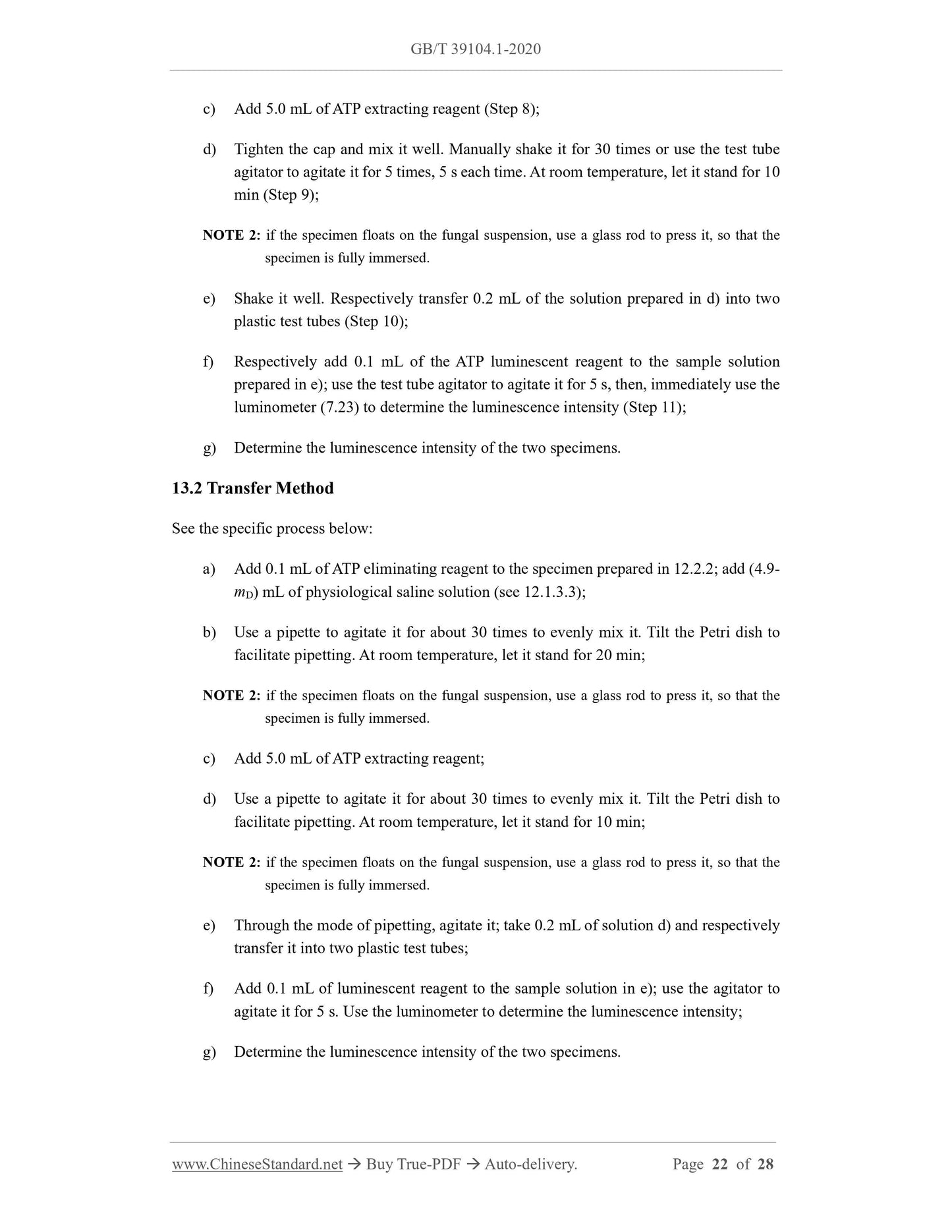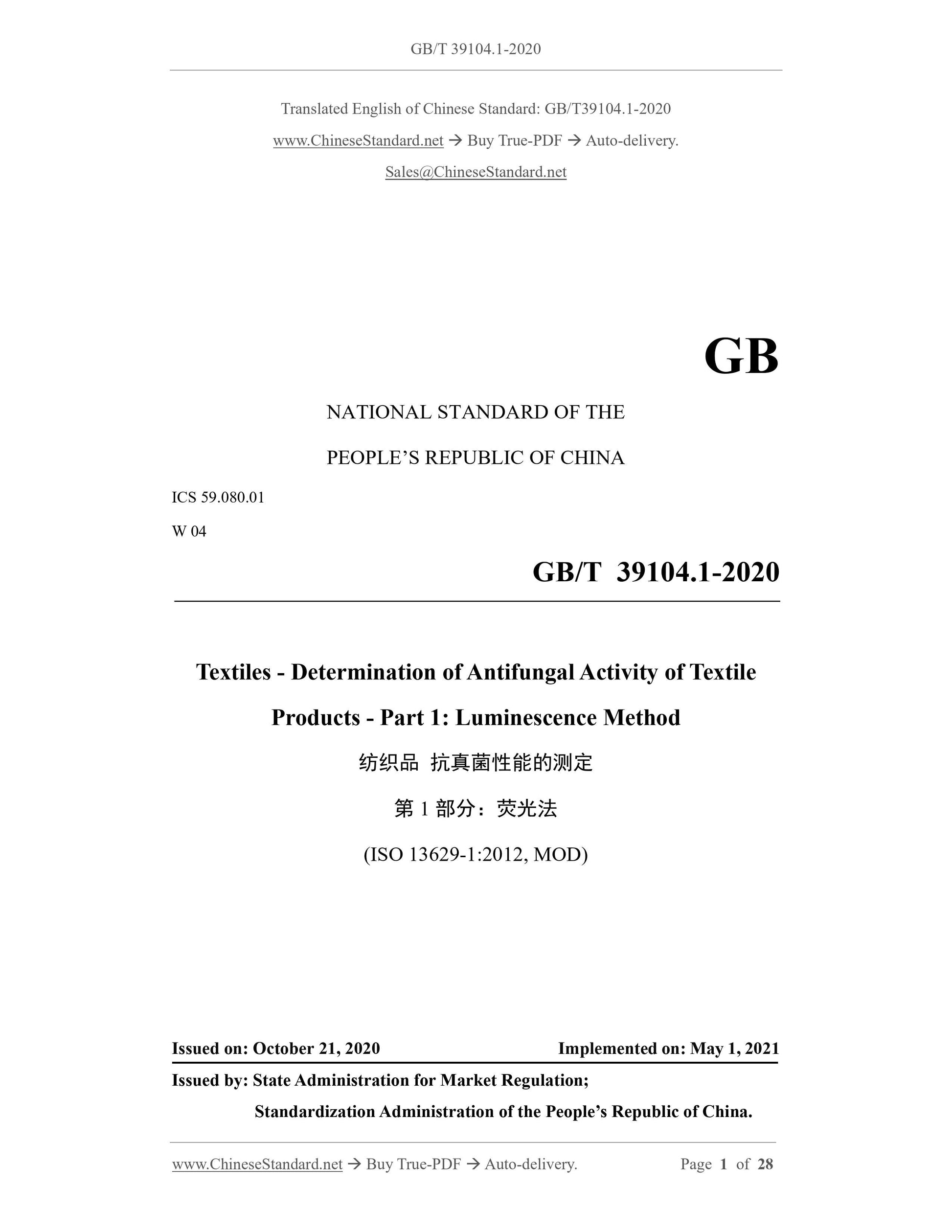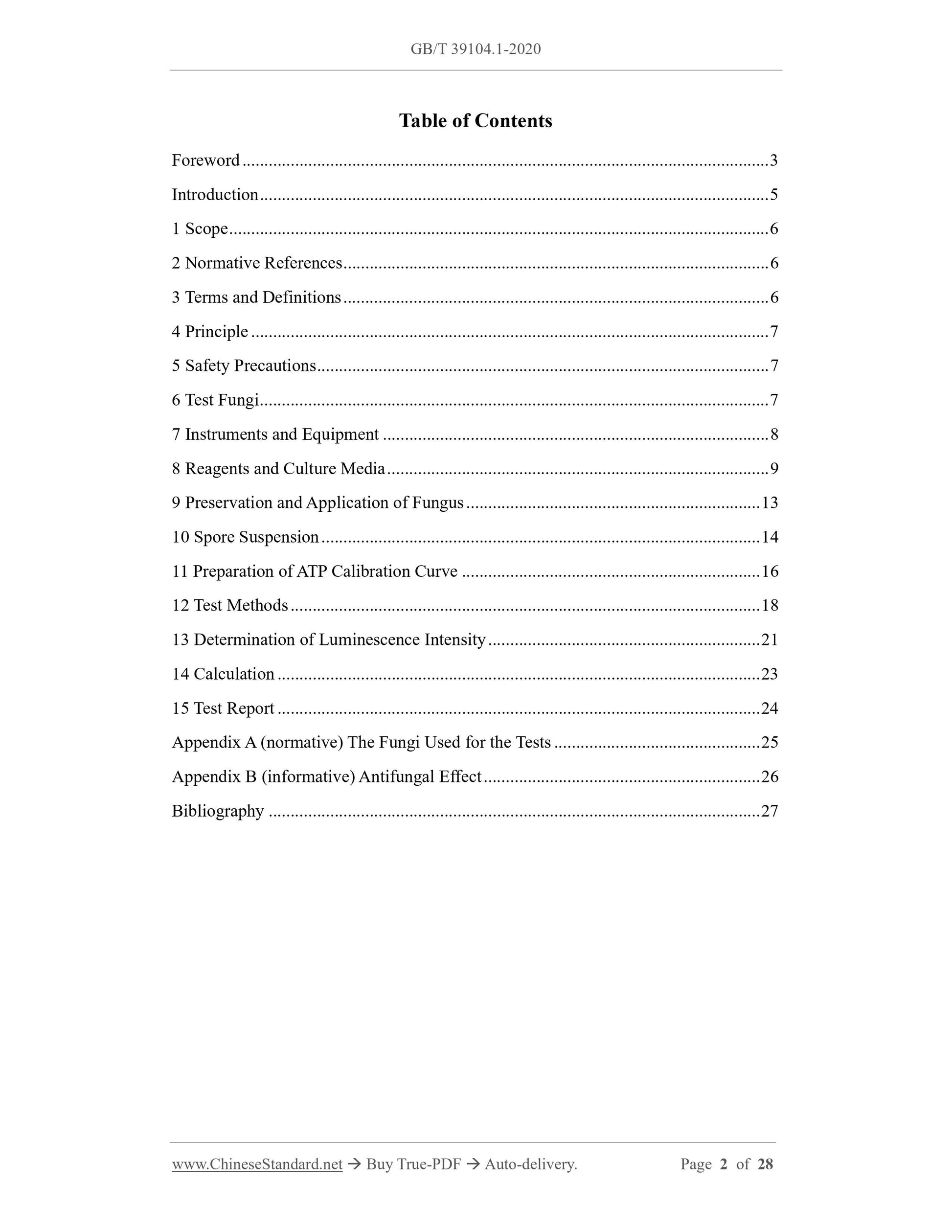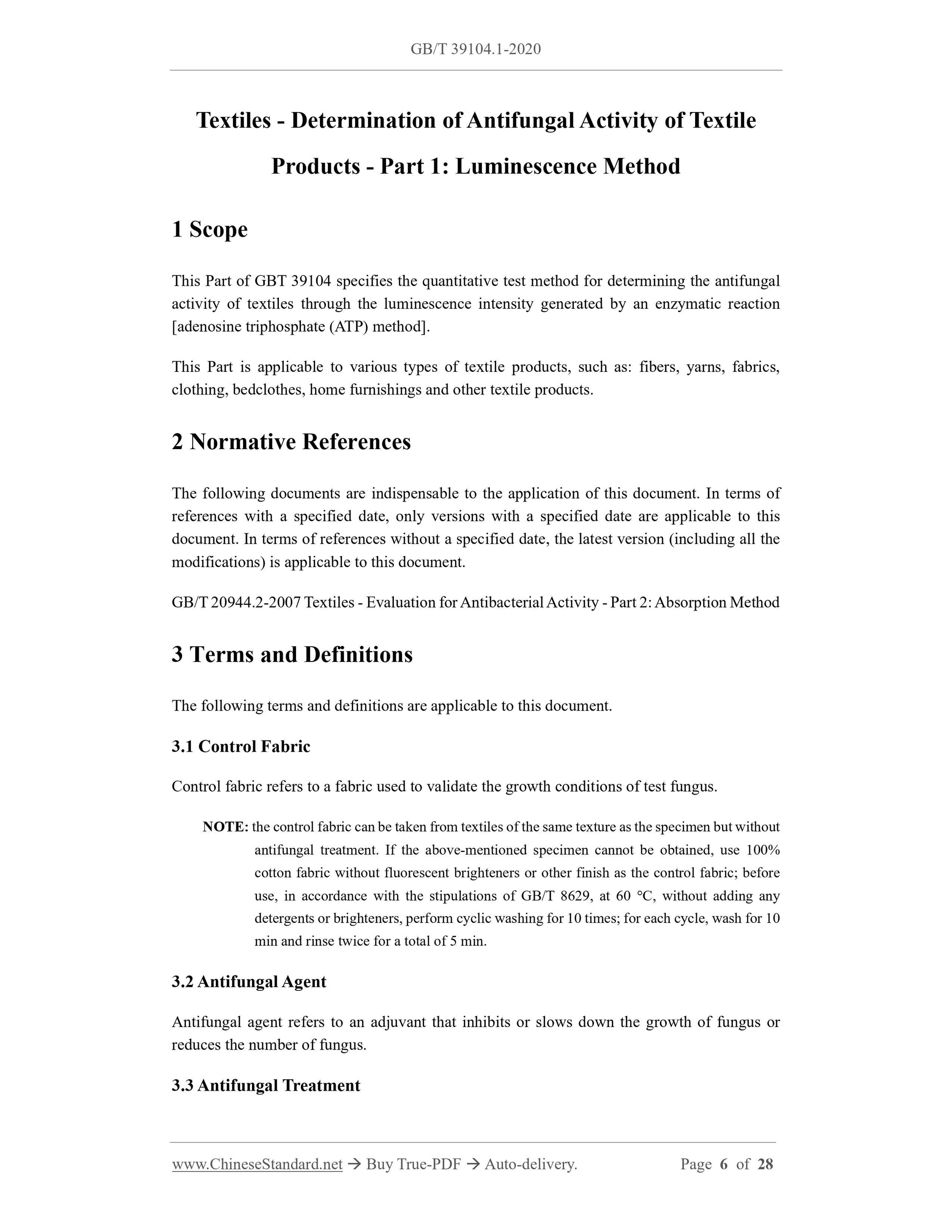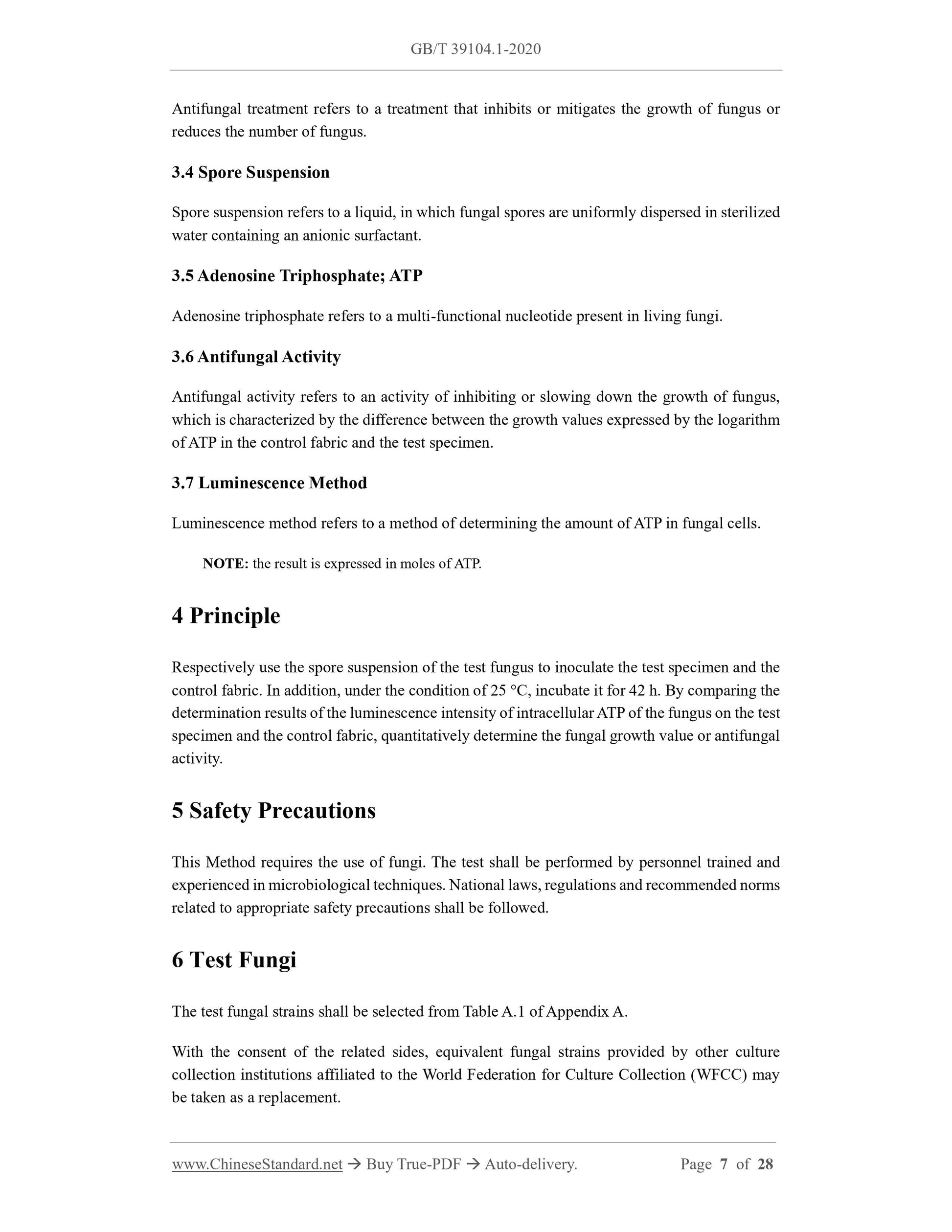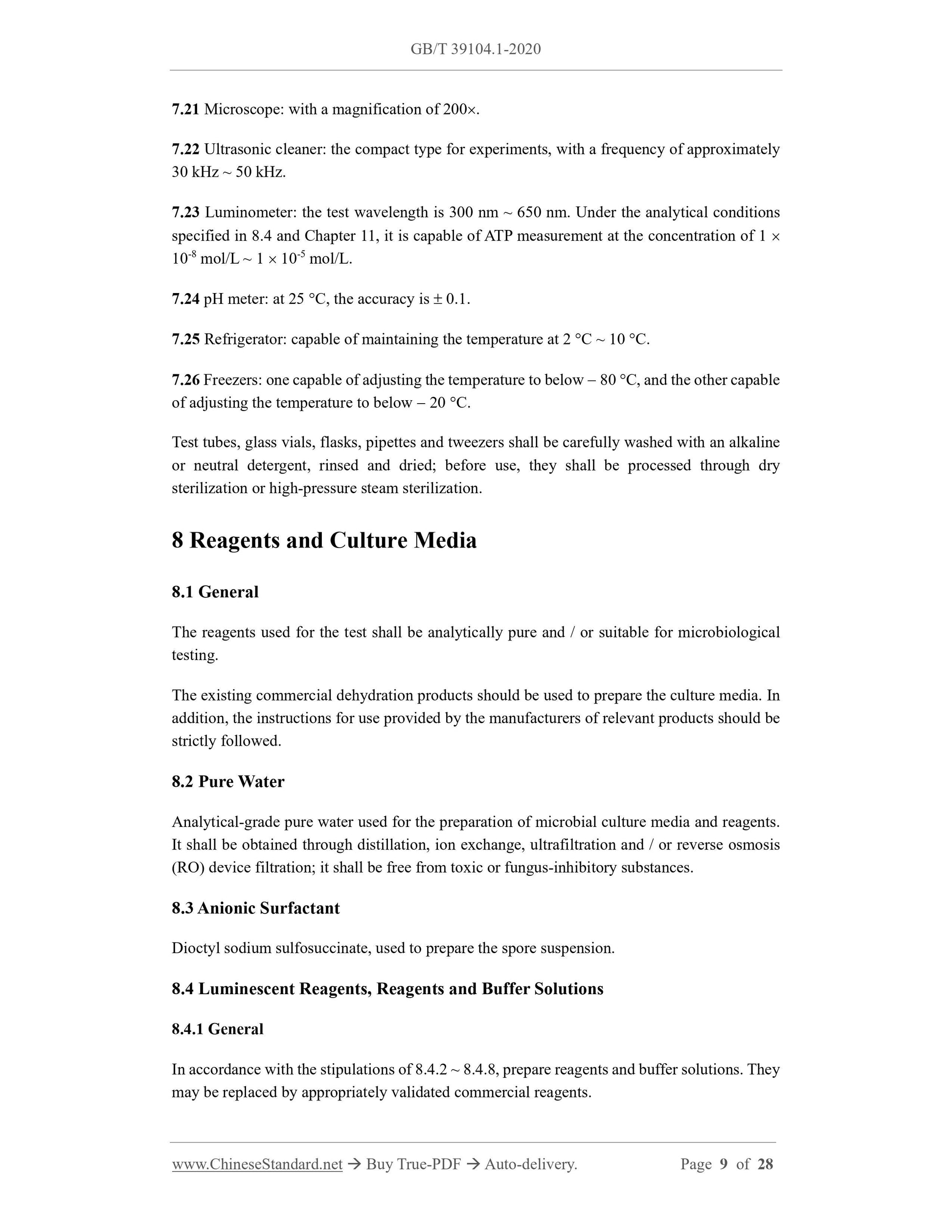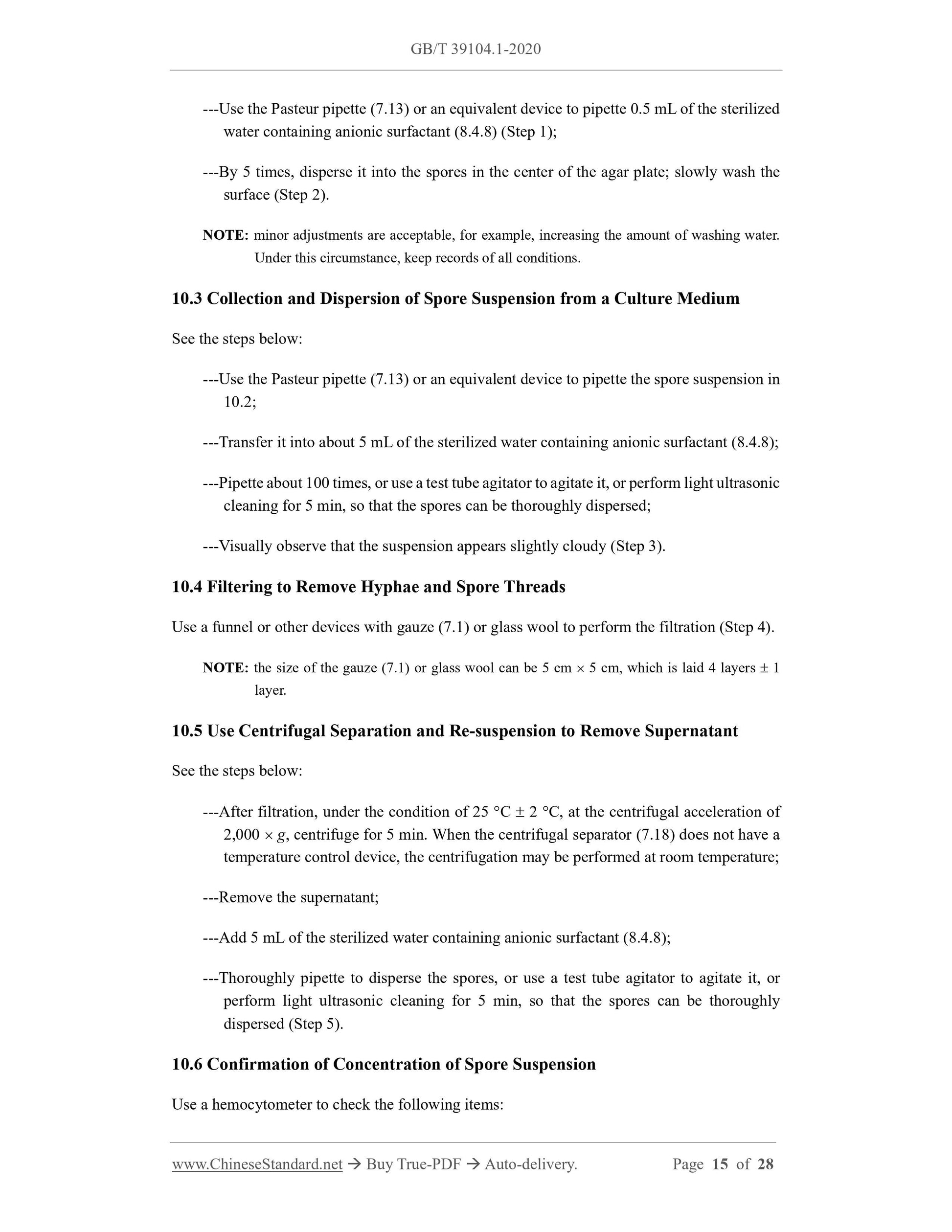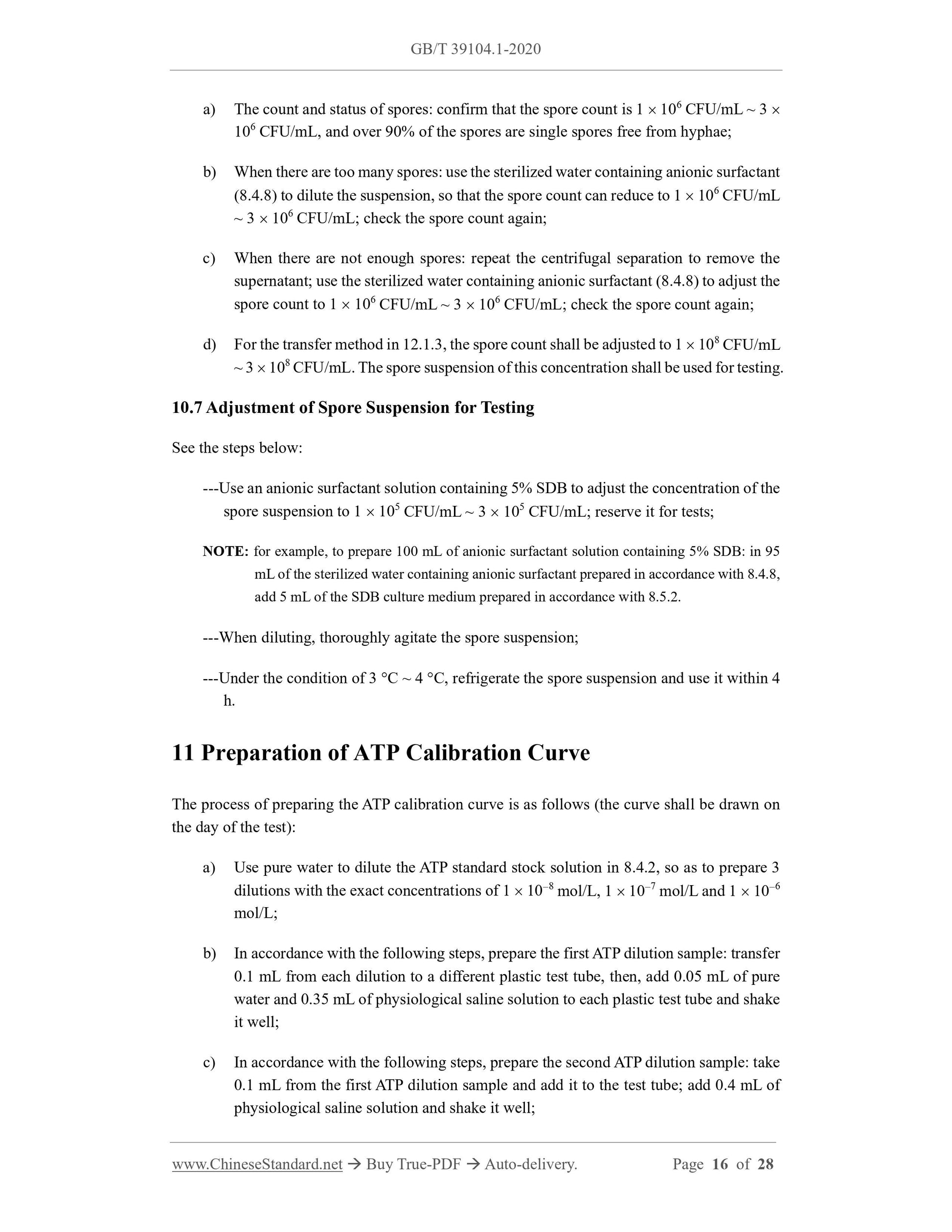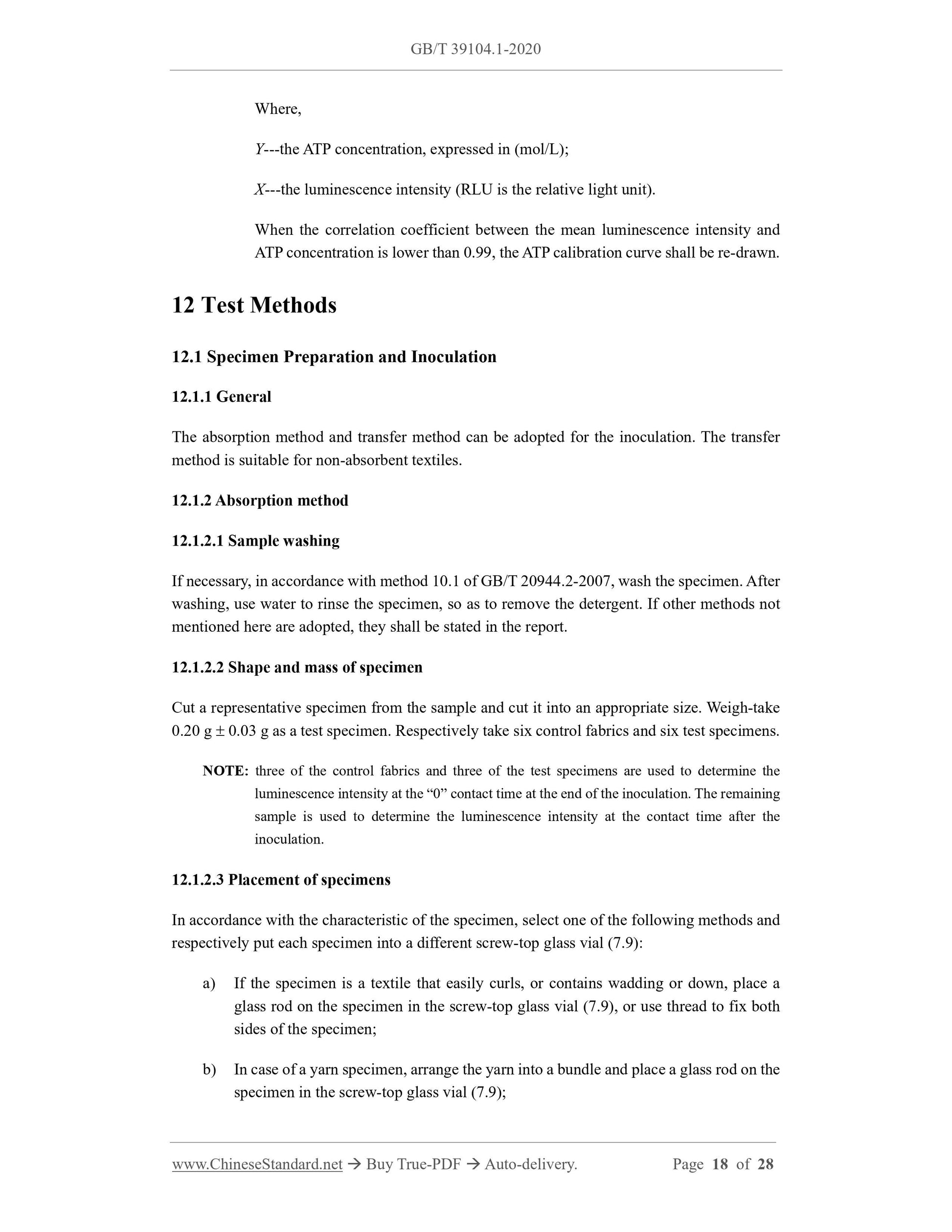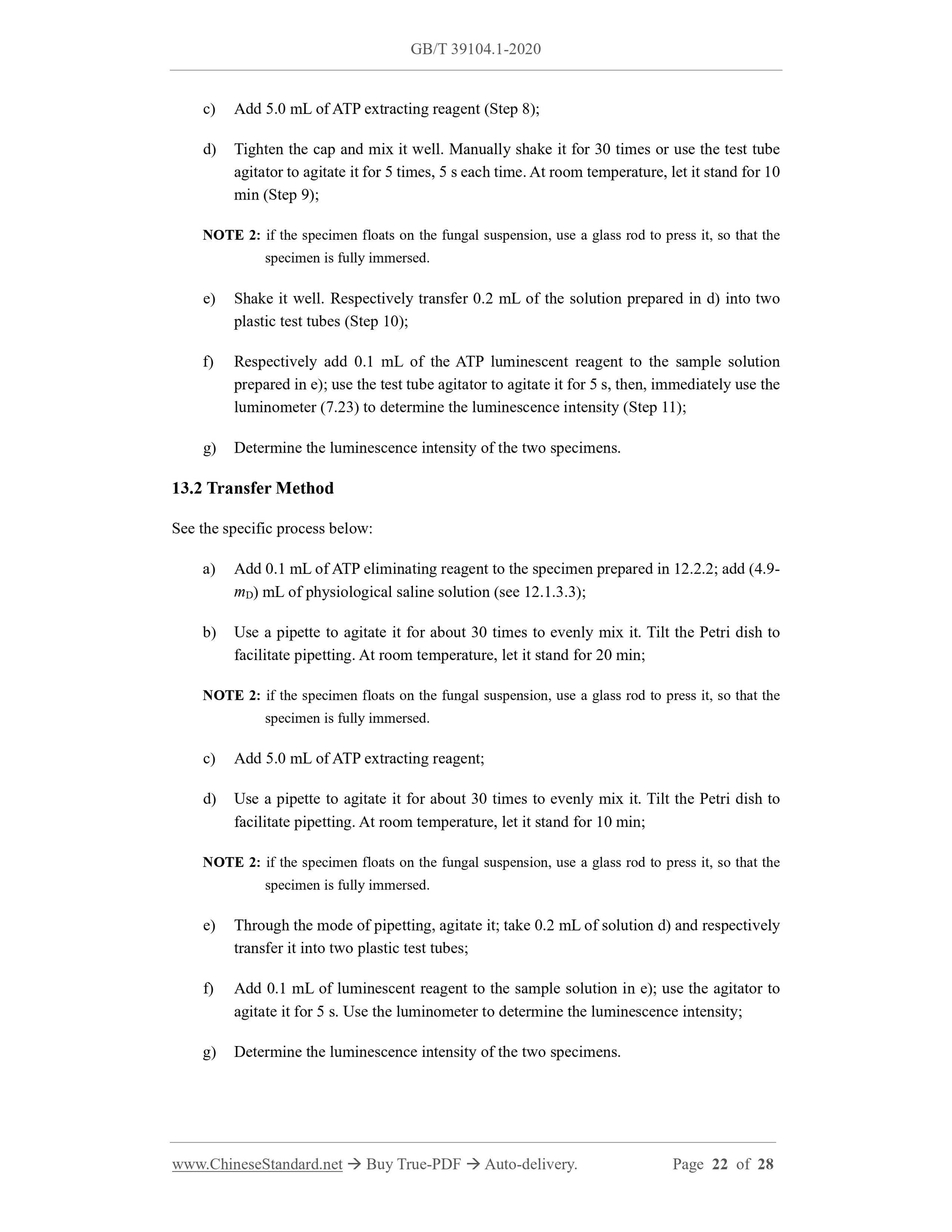1
/
of
10
www.ChineseStandard.us -- Field Test Asia Pte. Ltd.
GB/T 39104.1-2020 English PDF (GB/T39104.1-2020)
GB/T 39104.1-2020 English PDF (GB/T39104.1-2020)
Regular price
$320.00
Regular price
Sale price
$320.00
Unit price
/
per
Shipping calculated at checkout.
Couldn't load pickup availability
GB/T 39104.1-2020: Textiles - Determination of antifungal activity of textile products - Part 1: Luminescence method
Delivery: 9 seconds. Download (and Email) true-PDF + Invoice.Get Quotation: Click GB/T 39104.1-2020 (Self-service in 1-minute)
Newer / historical versions: GB/T 39104.1-2020
Preview True-PDF
Scope
This Part of GBT 39104 specifies the quantitative test method for determining the antifungalactivity of textiles through the luminescence intensity generated by an enzymatic reaction
[adenosine triphosphate (ATP) method].
This Part is applicable to various types of textile products, such as: fibers, yarns, fabrics,
clothing, bedclothes, home furnishings and other textile products.
Basic Data
| Standard ID | GB/T 39104.1-2020 (GB/T39104.1-2020) |
| Description (Translated English) | Textiles - Determination of antifungal activity of textile products - Part 1: Luminescence method |
| Sector / Industry | National Standard (Recommended) |
| Classification of Chinese Standard | W04 |
| Classification of International Standard | 59.080.01 |
| Word Count Estimation | 22,294 |
| Date of Issue | 2020-10-21 |
| Date of Implementation | 2021-05-01 |
| Issuing agency(ies) | State Administration for Market Regulation, China National Standardization Administration |
Share
